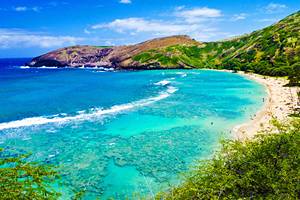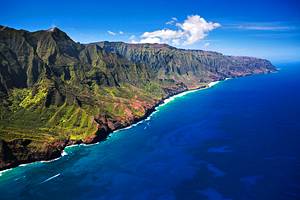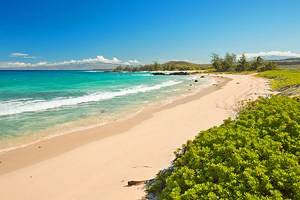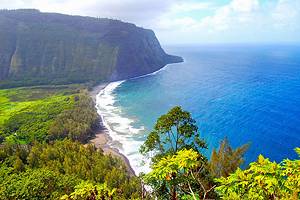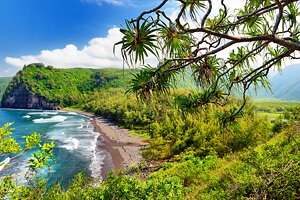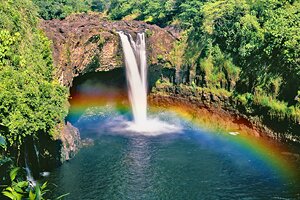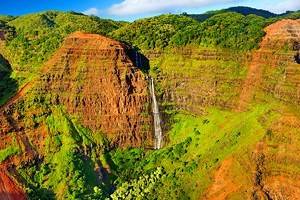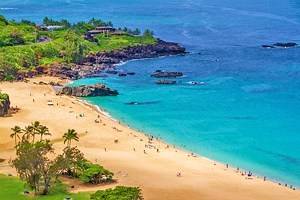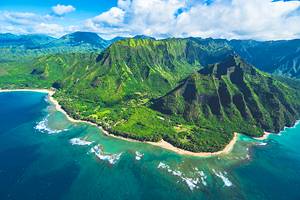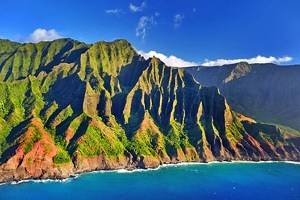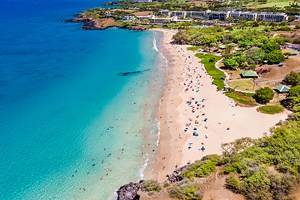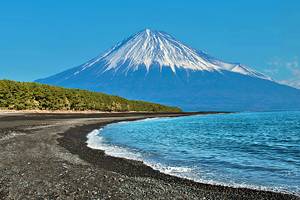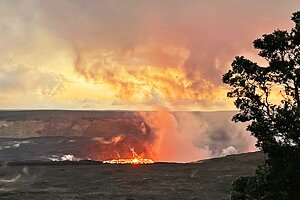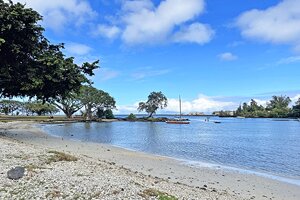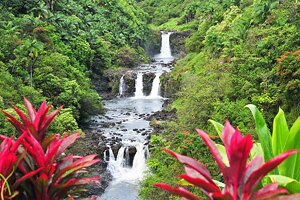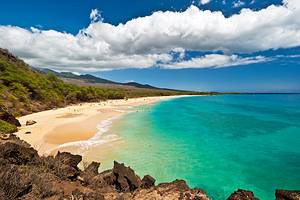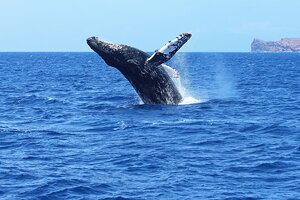Things to Do in Kona, HI
Meagan Drillinger visited Kona while exploring the Hawaiian islands in January 2023.
Kona may not be what you think of when you close your eyes and imagine Hawaii. It's certainly a much more commercialized slice of island life but in a bargain-hunter kind of way. One of the largest cities on the Big Island, it's easy to find plenty of things to do in Kona. It's home to shopping malls, nearby beaches and attractions, and it's the gateway to the majority of the island's hotels and resorts.
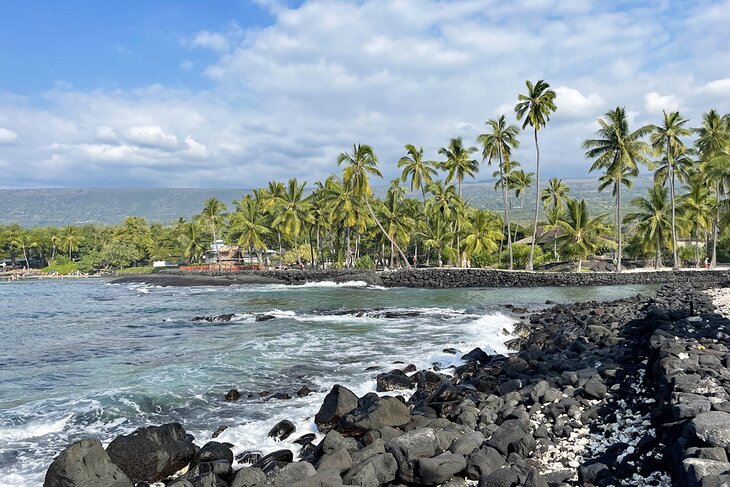
The Big Island is one of the richest islands in the Hawaiian archipelago when it comes to the history of Hawaii, and Kona is a great place to visit to dive into that history. You'll also find some of the most beautiful beaches on the Big Island right here.
Sitting in the shadow of the Mauna Kea volcano, Kona has a ruggedly beautiful landscape, surrounded by lava fields that roll right down to the water's edge. It's a wild landscape that holds evidence of thousands of years of history.
If you want to really understand the history of Hawaii and the Big Island, as well as enjoy some beautiful beaches and great attractions, these are the best things to do in Kona.
Drive to the Mauna Kea Summit
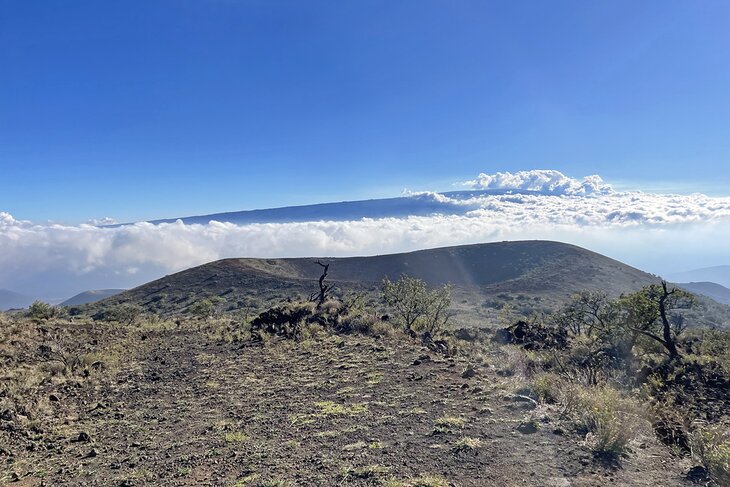
Hawaii's Big Island is the land of volcanoes. The island is built out of five of them, including the largest active volcano on Earth, Mauna Loa. But perhaps the biggest focal point on the Big Island is the dormant volcano, Mauna Kea, which rises out of the center of the island, looming over its many villages and towns for miles in every direction.
Mauna Kea is thoroughly majestic. Rising nearly 13,800 feet above sea level, this is the highest point in the Hawaiian islands — and you can drive yourself to the top for free.
The drive up to the summit is a narrow gravel road that does require a car with 4WD, but once you reach the top, brace yourself for the most breathtaking view above the clouds as you gaze out at the Big Island in every direction. Note: If you do plan to drive to the summit, it is recommended to stay for half an hour at the visitor station to acclimatize.
Because of its height and the lack of light pollution in the area, Mauna Kea has become a top center for stargazing and research. The visitor station sits halfway up the volcano, while the summit has its telescopes. The visitor station is called the Onizuka Center for International Astronomy Visitor Information Station and at night, local volunteer astronomers set up telescopes.
An official stargazing program is held four nights a week between 6 pm and 10 pm on Tuesday, Wednesday, Friday, and Saturday.
Relax at Manini'owali Beach
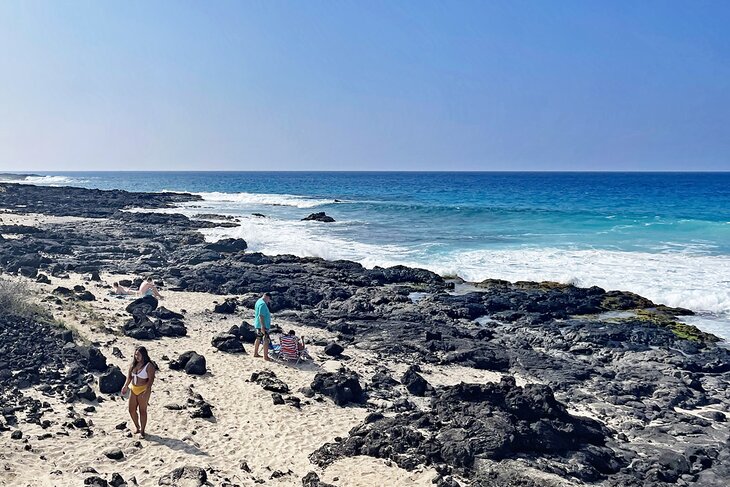
The beaches on the Kona side of the Big Island are beloved for their white sand and glittering turquoise water. This is in contrast to the Hilo side of the island, which is known for its black volcanic rock beaches and grassy lawns in lieu of sand. And when it comes to the best beaches in Kona, Manini'owali Beach skyrockets to the top of the list.
The expansive swath of powdery sand gently feeds into a shallow, calm pool of gorgeous blue water. The beach itself extends for three quarters of a mile and is one of the top spots in Kona for swimming, snorkeling, and kayaking. A reef just offshore is what makes it so safe to swim, and also a great place to visit for spotting tropical fish beneath the surface of the water.
Manini'owali Beach is also equipped with facilities, like a parking lot, restrooms, showers, and picnic tables. You'll find this beach popping with local families, particularly on weekends and holidays. It's close to town with perfect conditions and seems to leap from the pages of splashy magazines.
Read More: Places to Go Snorkeling in the World
Drive the Saddle Road
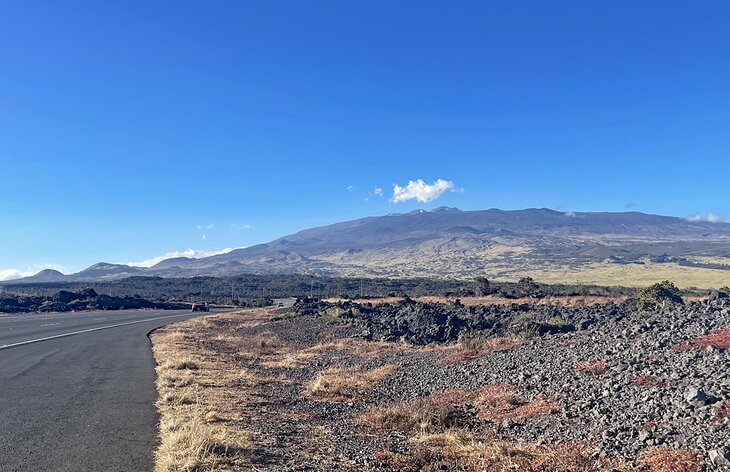
If one thing can be said about Hawaii's Big Island, it's that it is very, very big. The island is more than 4,000 square miles and makes up more than 60 percent of the Hawaiian islands' landmass.
Driving around the entire island takes about eight hours. Fortunately, what is known as the Saddle Road cuts driving time across the island down to less than two hours, and is one of the most beautiful drives in the country.
The Big Island's Saddle Road slices the island from east to west, rising up through a high mountain in between Mauna Kea and Mauna Loa. The drive follows Route 200 and runs for 54 miles through some of the most spectacular landscapes. Think dried lava flows, rainforests, and rolling green fields. Along the way are many of the island's hiking trailheads that lead off into moon-like landscapes.
Keep in mind that Saddle Road has no gas stations along the way, so plan your trip accordingly. Weather can be an issue along the road, too, so always check the conditions before setting out.
Still, this is one of the most beautiful drives you can do in the United States and one of the easiest ways to get between Kona and Hilo.
Explore Kaloko-Honokohau National Historical Park
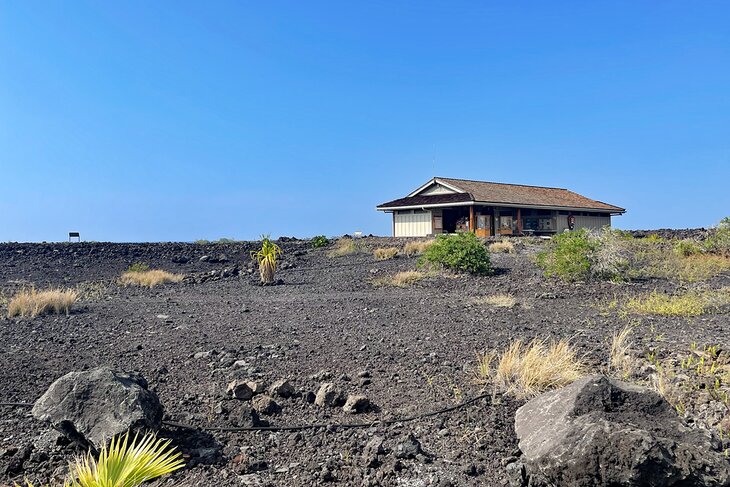
Perched on the coast just north of Kailua-Kona is the historically significant Kaloko-Honokohau National Historical Park. This is one of the best places on the island to learn about historic Hawaiian culture, and on the Big Island, you have many options for learning about Hawaiian culture.
The park features information about the early Hawaiian settlements and how they were able to thrive on the volcanic landscape surrounding Kona. Within the park are several sacred temples, petroglyphs, historic fishponds, and opportunities to spot wildlife.
Several walking trails weave around the rugged landscape and allow you to take in the wild and rugged landscape of mountain meets sea. It's one of the best places to visit on the Big Island to come to appreciate all of what makes the area so special — wild landscapes, ancient history, and beautiful views.
Wander the Kona Cloud Forest Sanctuary
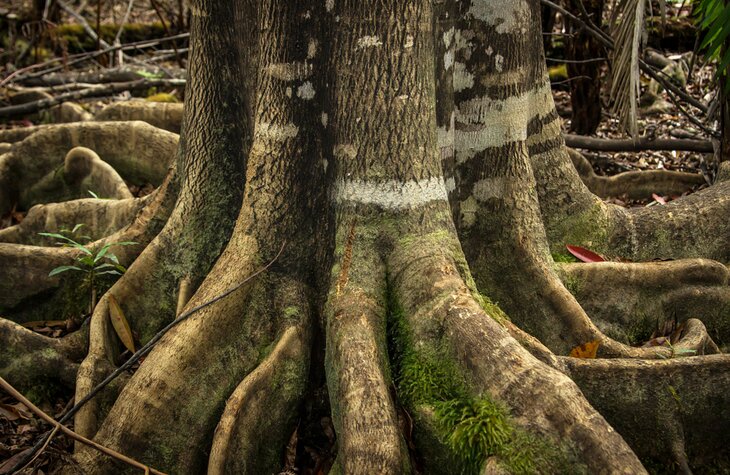
Yet another type of environment you can find on the Big Island is cloud forest, most notably at the Kona Cloud Forest Sanctuary. A cloud forest is exactly as it sounds: a tropical environment that is often blanketed in misty cloud cover. It's a magical, dreamlike landscape, and one just happens to be right outside of Kona.
Compared with the rugged, desert-like lava fields that surround Kona, the cloud forest is a unique and interesting type of contrast. But that is the beauty of the Big Island.
The sanctuary spans 70 acres that creep up the slopes of Mt. Hualalai. Visitors can take a botanical tour to experience the lush landscape or sign up for many of the on-site programs, like mindfulness experiences, educational workshops, and events. Some of the popular experiences include Sound Bath Meditation Journeys or Forest Immersion Guided Meditation.
The tour will take visitors up close and personal with bamboo trees, ferns, flowers, and wildlife. Those searching for serenity and peace will find it here among the misty clouds and many shades of deep green.
Address: 73-1865 Hao Street, Kailua-Kona, Hawaii
Swim at Makalawena Beach
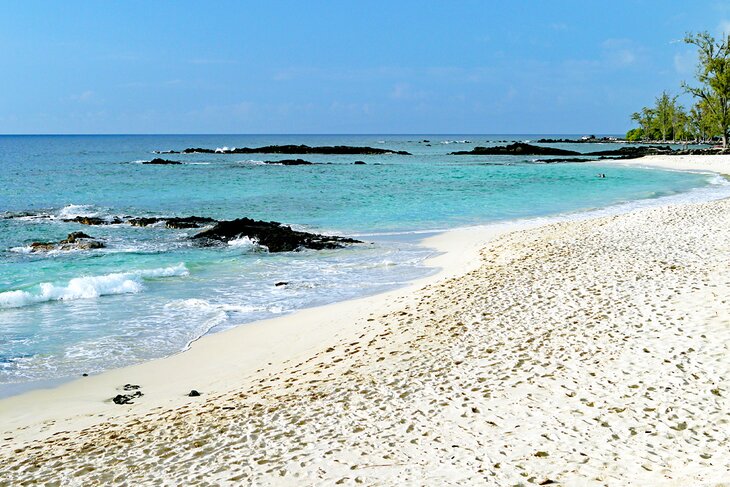
If you want a pristine, white sand beach without the crowds, then Makalawena Beach is the one to hit on Kona. This sugary beach is known for its spectacular water, shady palm groves, and stark white sand. The best part? Fewer crowds because this is one of the beaches on the Big Island that you cannot reach by car.
The hike to Makalawena is not a challenging one, but because it requires a bit of leg work to get there, you may find you have the beach all to yourself. The trailheads can be found either between mile markers 88 and 89 on Highway 19 or between 90 and 01-mile markers on highway 19. Keep in mind that you'll need sunscreen and a hat because the trail is very much exposed, and the sun can be very intense.
Once you arrive at the beach, have the camera ready. The land behind Makalawena is private, so you won't find any developments here. It's just a pristine, uninterrupted beach with perfect sand and calm, swimmable turquoise water.
Visit Hulihe'e Palace
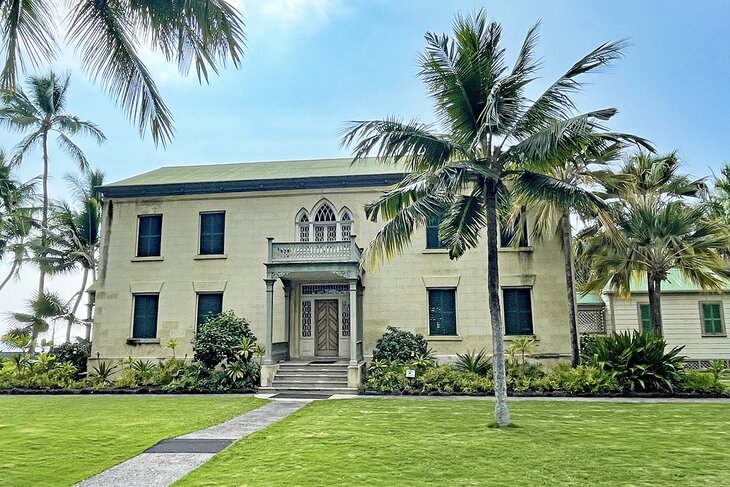
Kailua-Kona has so much Hawaiian history, dating back thousands of years to the present. On the more recent end of history, you can explore Hulihe'e Palace, which is located on a green, grassy pit of land right along Ali'i Drive.
The palace is a bit of living history here on the Big Island. It was built out of lava rock on land known as Kalake'e, one of the former residences of King Kamehameha the Great. The palace then became home to High Chief John Adams Kuakini, who was the brother of Kamehameha's favorite wife.
Today the palace is open for tours for those interested in the historic preservation of Hawaii. It's on the National Register of Historic Places and has a museum that has artifacts from the days of King Kalakaua and Queen Kapi'olani.
Address: 75-5718 Ali'i Drive, Kailua-Kona, Hawaii
Splash at Magic Sands
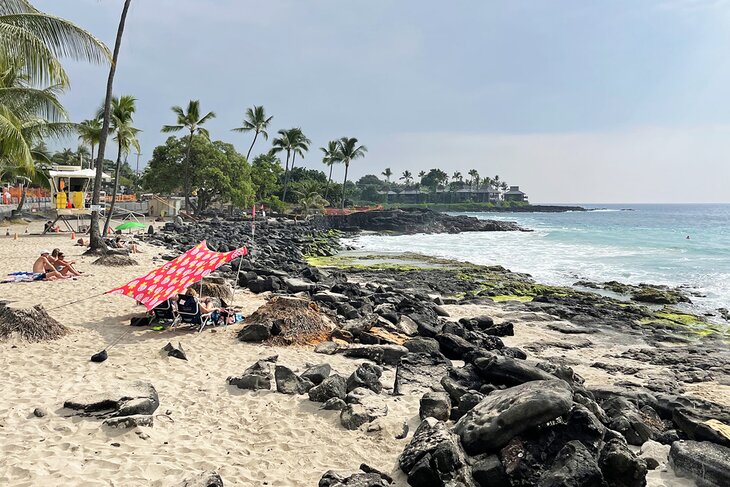
The sandiest beaches in Kona are usually found outside of town. But Magic Sands Beach is one of the few beaches that is a short hop from downtown. The beautiful beach, sometimes called White Sands Beach, has a fantastic location close to the hotels, restaurants, and shops along Ali'i Drive.
The reason the beach is called "Magic Sands'' is because the beach can quite literally vanish overnight. When the tide is high, the ocean drags the sand away leaving a bed of rocky lava. Over time, the currents of the ocean bring the sand back to shore, creating one of the loveliest beaches on the island.
You'll find people doing it all here — sunbathing, swimming, snorkeling, and surfing. A lifeguard on duty ensures that people only swim when the conditions are safe, too. Because of the beach's prime real estate, it can get crowded, so take that into consideration on weekends or during holiday breaks.
View the Puakō Petroglyph Archaeological District
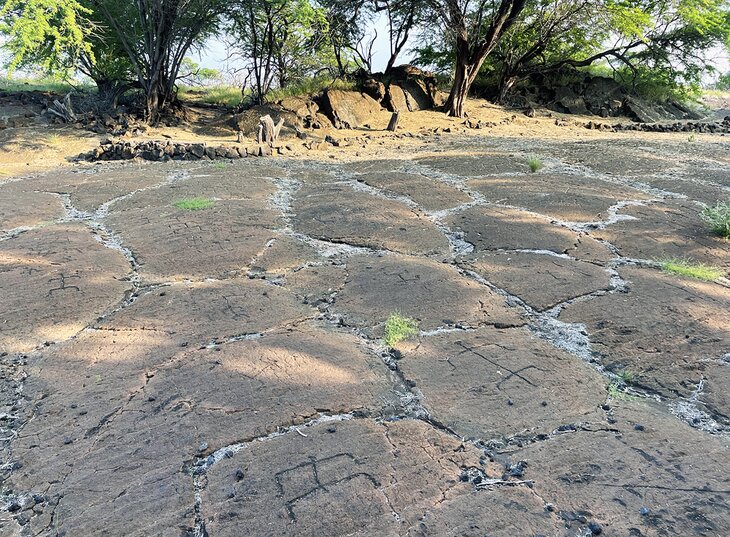
Not far from downtown Kona is a fascinating slice of prehistory. Located within the Mauna Lani resort area is the Puakō Petroglyph Archaeological District, which is home to thousands of ancient petrography designs. It's one of the largest concentrations of petroglyphs in all of the Hawaiian islands.
The Puakō Petroglyph Archaeological District spans 233 acres and can be accessed along the Malama Trail. The trail is less than two miles out-and-back and has 1,200 visible petroglyphs along the way. The walk itself is rather fascinating through ancient lava fields and paths lined with wiry, tunnel-like branches.
The Big Island is brimming with history everywhere you look, even next to some of the most luxurious resorts on the island.
Discover Pu'uhonua O Honaunau National Historical Park
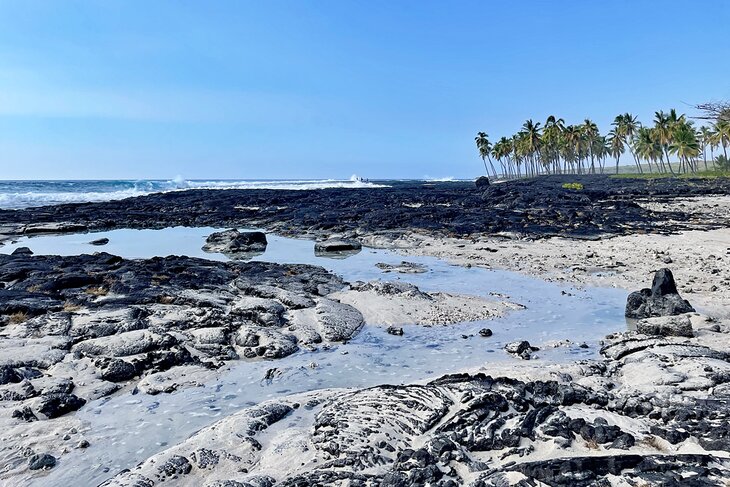
If you're looking to learn about Hawaiian history and culture, the Big Island is one of the best islands in the archipelago for that. The Big Island, and Kona in particular, has deep roots and ties to Hawaiian history, being the birthplace of King Kamehameha.
Perhaps the best place to learn about ancient Hawaiian culture in Kona is at Pu'uhonua O Honaunau National Historical Park. This 180-acre park is today part of the National Parks Service but was once the home of royal grounds and a place of refuge for those who had broken ancient Hawaiian law.
What remains are remnants of Hawaii's past days of glory, from the outline of ancient fishing ponds to historic barrier walls, thatched roof workhouses, a secret temple, and carved wooden statues. The grounds here are sacred and are an important stop in understanding the ancient roots of Hawaii.
More than that, the park has beautiful hiking trails and beaches, groves of palm trees, sea turtles, and spectacular sunsets.
Address: State Hwy 160, Hōnaunau, Hawaii


